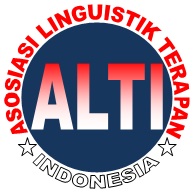Students Need Analysis in English Learning Materials in Vocational High School
DOI:
https://doi.org/10.46961/mediasi.v4i1.513Keywords:
Student Need Analysis, English Specific Purposes (ESP), Vocational High School,Abstract
Learning English in Vocational High School (SMK) is different from teaching English in Senior High School. In SMK, the orientation is to prepare students to be able to take part in the work field. Consequently, English teachers in vocational school are expected to have the ability to analyze the needs of the students so that they can design an appropriate teaching-learning process. The aim of this study was to identify some factual information about the needs of learning material in vocational students in learning English, especially in the some of language components in English (Vocabulary). The subjects in this study were the vocationalstudents of 2 (two) SMK which organized the TKJ and Hotels Tourism department in Bojonegoro. The results showed that the needs of students towards learning English is to meet the academic professions and the future needs of the students, which involved the skills of the language and some of the language components. Whereas in the case of conformity between the content of the English textbooks and the vocational students’ needs, it was found that the English textbooks was more focused on describing the English language competences generally and not directed to the Department of TKJ and Hotel Tourism itself.
References
Alexander, F. (2013). Understanding Vocabulary.[Online]. Available at:vwww.scholastic.com. [December 1, 2017]
Bada, E. & Okan, Z. (2000). Student’s Language Learning Preferences. TESL Journal Vol. 4 No.3. [Online]. Available at: http://www.writing.berkeley.edu/TESLEJ/ej15/a1.html.
Barkhuizen, G.P. (1998). Discovering Learners' Perceptions of ESL classroom Teaching/Learning Activities in a South African Context. TESOL Quarterly, 32, 85-108.
Beccy. (2013). Why Language Students are Reluctant to Speak?[Online]. Available at: www.kanzilingua.com. [December 2, 2013]
Berkowitz, B. & Nagy, J. (2013). Conducting Needs Assessment Surveys. The Community Tool Box. Available Online at: http://ctb.ku.edu/. Current as of April 30, 2013.
Brown, J.D. (1995). The Elements of Language Curriculum. A Systematic. Approach to Program Development. University of Hawaii at Manoa. Massachusetts: Heinle & Heinle Publishers.
Burns, R. (2000). Introduction to Research Methods: Fourth Edition. San Fransisco: Addison Wesley Longman, Inc.
Ghozali, Imam. (2011). Pengembangan Buku Teks Bahasa Inggris Integratif. Disertasi. Pascasarjana. Linguistik. Universitas Sebelas Maret Surakarta.
Harmer, J. (2007). How to Teach English. England: Longman.
Hutchinson, T., and Waters, A. (1987). English for Specific Purposes: A Learner Centered Approach. Cambridge University Press.
Kavaliauskiene, G. (2003). English for Specific Purposes: Learner’s Preferences and Attitudes. Journal of Language and Learning Vol. 1 No. 1. [Online]. Available at: http://www.shakespeare.uk.net/journal/jlearn/1_1/kavaliauskiene_learn1_1.html
McWhorter, J. (2011). What Language Is (and what it isn’t and what it could be). [Online]. Available at: http://opinionator.blogs.nytimes.com.
Nunan, D. (1988). The Learner-Centred Curriculum. Britain: Cambridge University Press.
Nunan, D. (2001). Syllabus Design. Oxford: Oxford University Press. Republik Indonesia. 1990. Peraturan Pemerintah Republik Indonesia No. 29 Tahun 1990 tentang Pendikan Menengah. Jakarta. Republik Indonesia. 2003. Undang-Undang No. 20 Tahun 2003 tentang Sistem Pendidikan Nasional. Jakarta
Richards, J.C. (2001). Curriculum Development in Language Teaching. UK: Cambridge University Press.
Robinson, P. C. (1989). An overview of English for specific purposes. In H. Coleman (Ed.), Working with language: A multidisciplinary consideration of language use in work contexts (pp. 395-428). Berlin: Mouton de Gruyter.
Downloads
Published
How to Cite
Issue
Section
Citation Check
License
You are free to:
- Share — copy and redistribute the material in any medium or format
- Adapt — remix, transform, and build upon the material
- The licensor cannot revoke these freedoms as long as you follow the license terms.
Under the following terms: Attribution; NonCommercial; and no additional restrictions.















